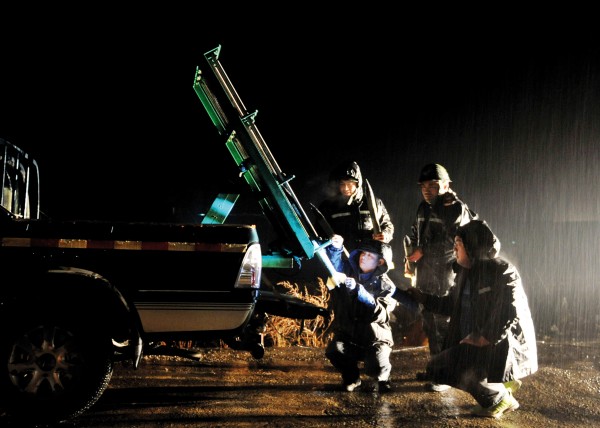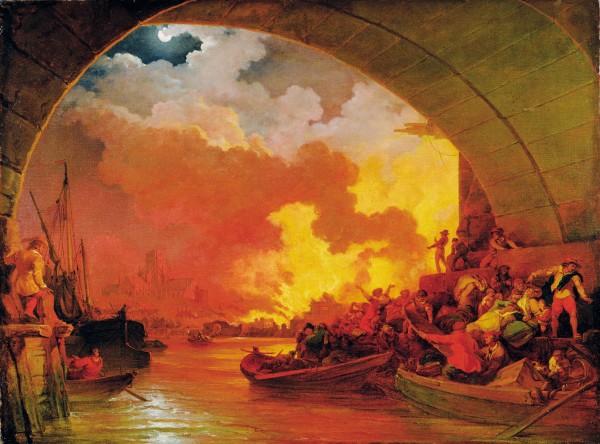Cloudspotting from space

One of the exciting advances in meteorology over the past 30 years has been the introduction of hourly satellite images of the Earth’s atmosphere. Positioned about 36,000 km above the Equator, the satellites that take these images orbit with the same angular velocity as the Earth, so they remain above the same spot on the Earth’s surface—what is known as a geostationary orbit.
These satellites take infrared images 24 hours a day, and collects images in visible wavelengths during daylight hours. The cloud pictures they transmit have not only advanced our understanding of large-scale weather systems such as cyclones and fronts, but have also opened up a world of smaller, meso-scale weather systems.
As well as being informative, some of these images are extremely eye-catching, such as the chain of vortices streaming away over the Tasman Sea from Mount Taranaki in the picture for the morning of March 23 this year. Known as Von Karmen vortices, these clouds form in a south-east airstream produced by the combination of an anticyclone moving over the South Island and a low-pressure area moving away to the east of the North Island. The approaching anticyclone causes the air to become stable and resist upward motion. This happens because air in the anticyclone descends towards the Earth’s surface from high in the atmosphere. As the air sinks, higher surrounding pressure compresses it, causing its temperature to increase. The warm air generally stops descending and spreads out horizontally between one and two kilometres above sea level, trapping colder air below it. The difference in temperature between the warm and cold air is often around five degrees, and is concentrated in a shallow layer known as a subsidence inversion. A layer of cloud is frequently present just below the inversion.
Because the cold surface air is much denser than the warm air above, the surface air experiences a strong buoyancy force pushing it back down if something such as land blocking the wind makes it rise. So, when the subsidence inversion of an approaching anticyclone descends below the mountain tops, the air is mostly forced to flow around the mountains and not over them.
In the case of Mount Taranaki, the inversion generally descends about half way down the mountain when Von Karmen vortices are formed, and the wind is stronger below the inversion § than above. In this case, the weather balloon released from New Plymouth at 6 A.M. on March 23 measured winds of 70 km/h below the inversion and about half this speed above.
As the low-level air accelerates past the mountain, eddies rotating in opposite directions are shed alternatively from either side of the mountain. On this occasion, cloud did not form as soon as the vortices were created, as the air was too dry, having recently been warmed as it descended in the lee of the Ruahine Ranges. (The tops of the Ruahine Ranges are lower than Mount Taranaki and still below the subsidence inversion.).
However, as the air moved over the Tasman, its humidity gradually increased and shallow cloud formed in the characteristic pattern of Von Karmen vortices. These vortices stop spinning by about the fifth vortex downstream from the mountain, but the cloud remains longer, and is sometimes referred to as fossil cloud.
Other examples of cylindrical objects shedding vortices into the wind are aeolian harps and the sighing noise made by pine trees in a gentle breeze. In running water, a bobbing reed also behaves in this way.
Another feature that can be seen in this picture is a ripple pattern in the clouds east of Lake Taupo which extends southwards just west of the main divide of the Tararua and Ruahine Ranges. These lenticular clouds form when stable air blows across a mountain range. Downwind of the mountains, a wave pattern is set up in the atmosphere. Air moves through the waves, but the waves do not move—much like water in a stream flowing over a rock.
When the air rises into a wave crest, it cools enough for cloud to form. When it sinks into a trough, it warms enough for the cloud to evaporate. Sometimes the air can be moving through the waves as fast as 150 km/h, with the cloud continuously forming on the leading edge and dissipating on the trailing edge, creating the illusion that the cloud is stationary. The strong downward motion in the waves is extremely dangerous for low-flying aircraft, as is the severe turbulence usually found between the waves and the ground.
At the time of this photograph, rain showers were present over Gisborne, Hawkes Bay and Wairarapa, where the south-east flow was driving cloud onshore. Further south, over Wellington and Marlborough, there was cloud, but the inversion was low enough to prevent showers forming. The sky was clear from Canterbury southwards, as a light northwest wind had pushed the cloud out to sea. Over the west of the South Island, the north-west wind on the southern side of the anticyclone had not had enough time to drive the cloud onshore, and it was fine apart from some valley fogs.
The best time to see Von Karmen vortices is soon after sunrise. As the day goes on, they usually weaken and dissipate. This is because the low-level winds usually reach their maximum speed about
dawn. During the night, the ground becomes progressively colder because it is radiating heat away to space. The cold ground then cools the air immediately above, which slows down and clings to the ground, forming a thin, cold skin of air. Above this layer the air is able to move faster than before because friction between layers of air is much less than between the air and the ground. Once the sun comes up, the ground is heated and the surface air is warmed and begins to mix with the air above, slowing it down.
The cooling of the ground on a clear night also provides the explanation for the cloud pattern in the second photograph, which was taken at 10 A.M. on June 6 of this year. On this occasion, the winds over the South Island were light. Once a skin of cold air had formed next to the ground, it began to slide downhill, because it was much denser than the surrounding air.
Eventually this cold air slid off the land and blew out to sea as a wind of about 10 km/h. This created a convergence zone, where the cold air slid under the air already over the sea and pushed it up, forming a distinct line of cloud. This can be seen off the South Island coast from Canterbury to Otago, through Foveaux Strait and around to Fiordland.
Because the air over the sea was only marginally stable, the lifting by the cold air was enough to trigger the development of showers. The line of showers spent most of the day offshore but drifted back over Oamaru in the evening with 10 mm of rain over eight hours.
So, just as satellite pictures help us get on top of the big picture, they also present us with a whole world of smaller challenges to test our forecasting abilities!

















